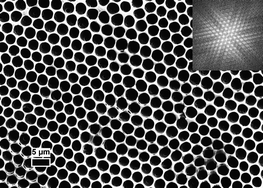Robust and hydrophilic polymeric films with honeycomb pattern and their cell scaffold applications
Abstract
Starting from a commercially available

* Corresponding authors
a
College of Materials, Xiamen University, Xiamen, P. R. China
E-mail:
lilei@xmu.edu.cn
Fax: +86-592-2183937
Tel: +86-592-2186296
b Medical College, Xiamen University, Xiamen, P.R. China
c Shanghai Institute of Organic Chemistry, Chinese Academy of Sciences, Shanghai, P. R. China
Starting from a commercially available

 Please wait while we load your content...
Something went wrong. Try again?
Please wait while we load your content...
Something went wrong. Try again?
L. Li, C. Chen, J. Li, A. Zhang, X. Liu, B. Xu, S. Gao, G. Jin and Z. Ma, J. Mater. Chem., 2009, 19, 2789 DOI: 10.1039/B820279F
To request permission to reproduce material from this article, please go to the Copyright Clearance Center request page.
If you are an author contributing to an RSC publication, you do not need to request permission provided correct acknowledgement is given.
If you are the author of this article, you do not need to request permission to reproduce figures and diagrams provided correct acknowledgement is given. If you want to reproduce the whole article in a third-party publication (excluding your thesis/dissertation for which permission is not required) please go to the Copyright Clearance Center request page.
Read more about how to correctly acknowledge RSC content.
 Fetching data from CrossRef.
Fetching data from CrossRef.
This may take some time to load.
Loading related content
